RARE! WWII 1944 Dated 205th Bomb Group (Heavy) 15th Air Force Combat Intelligence Photograph


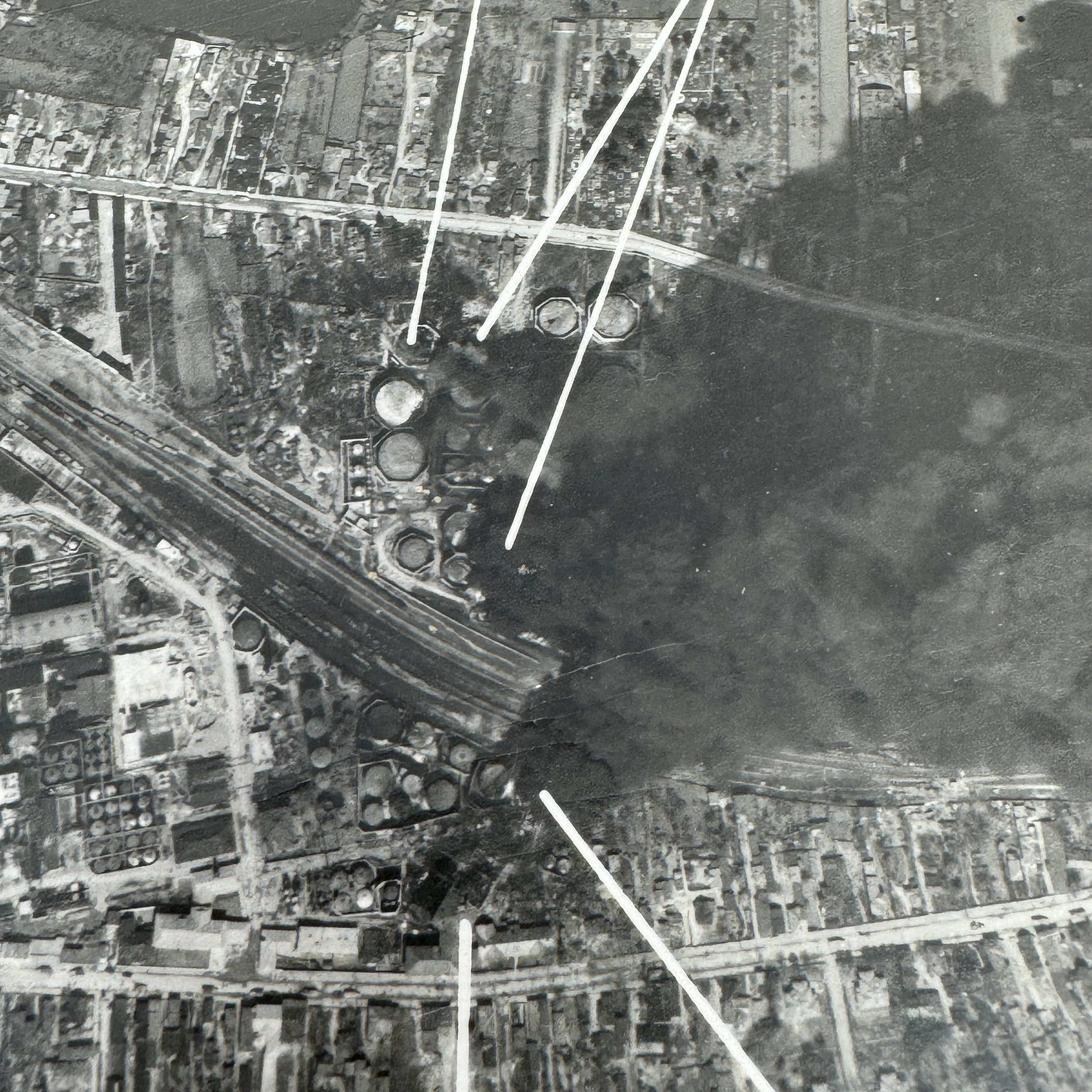



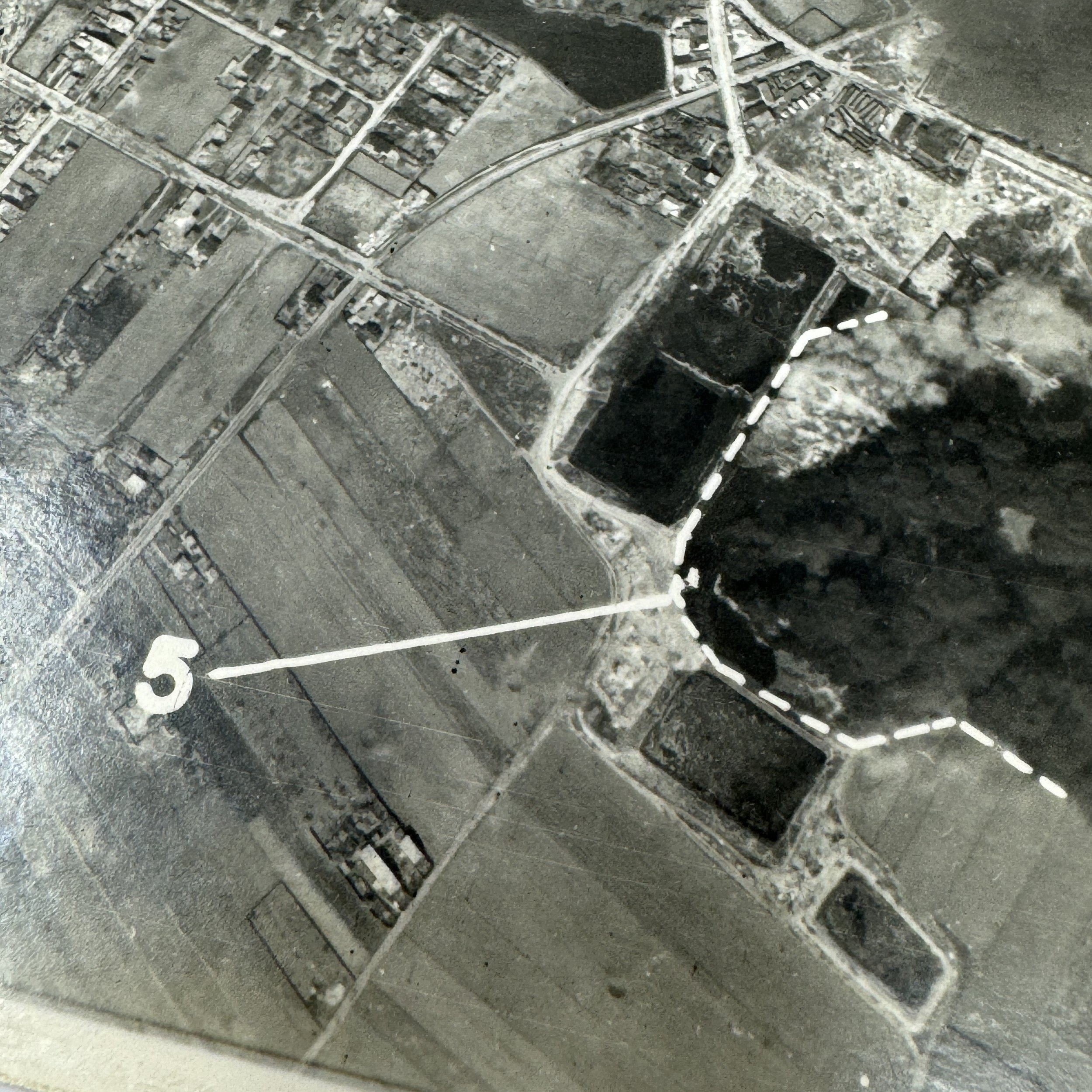
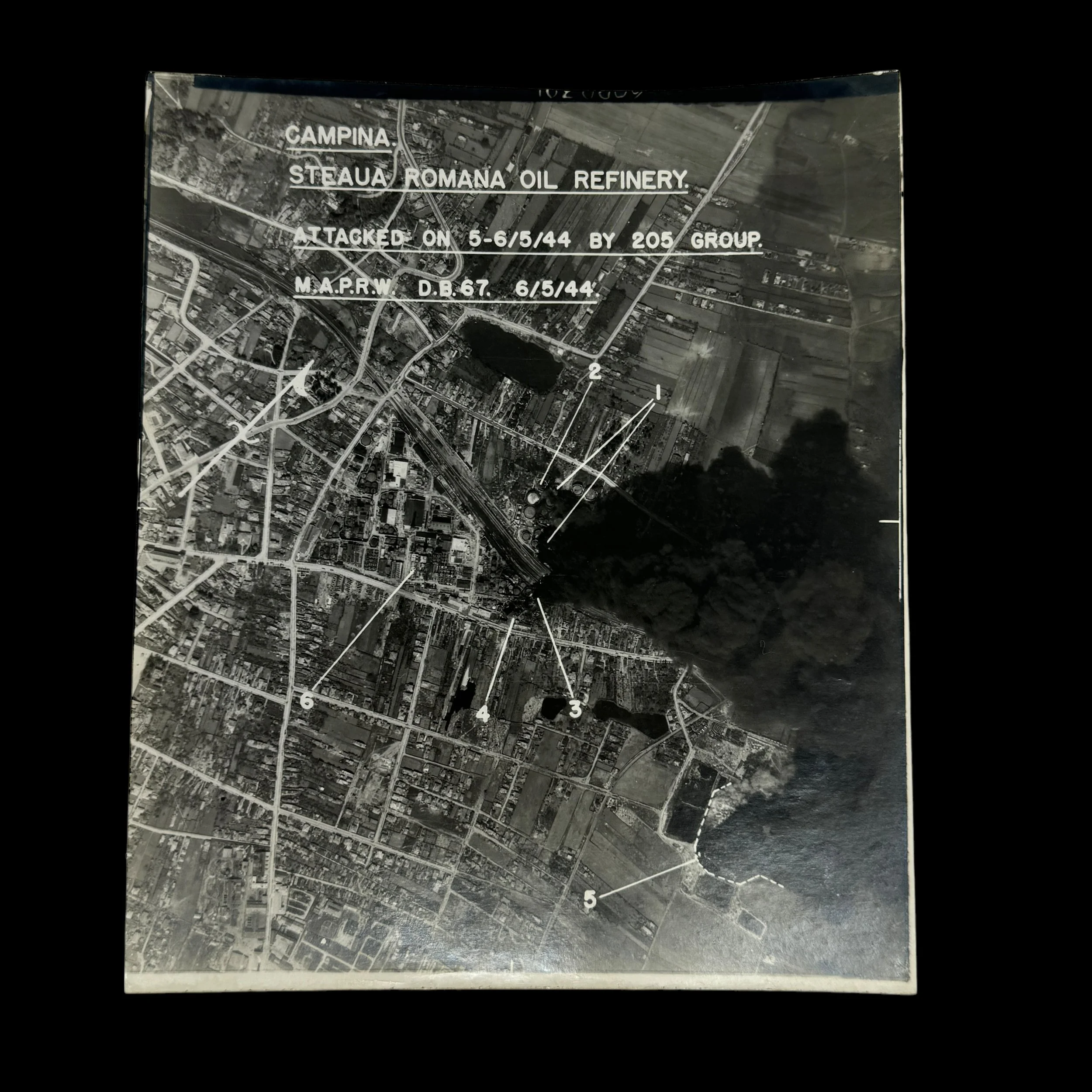
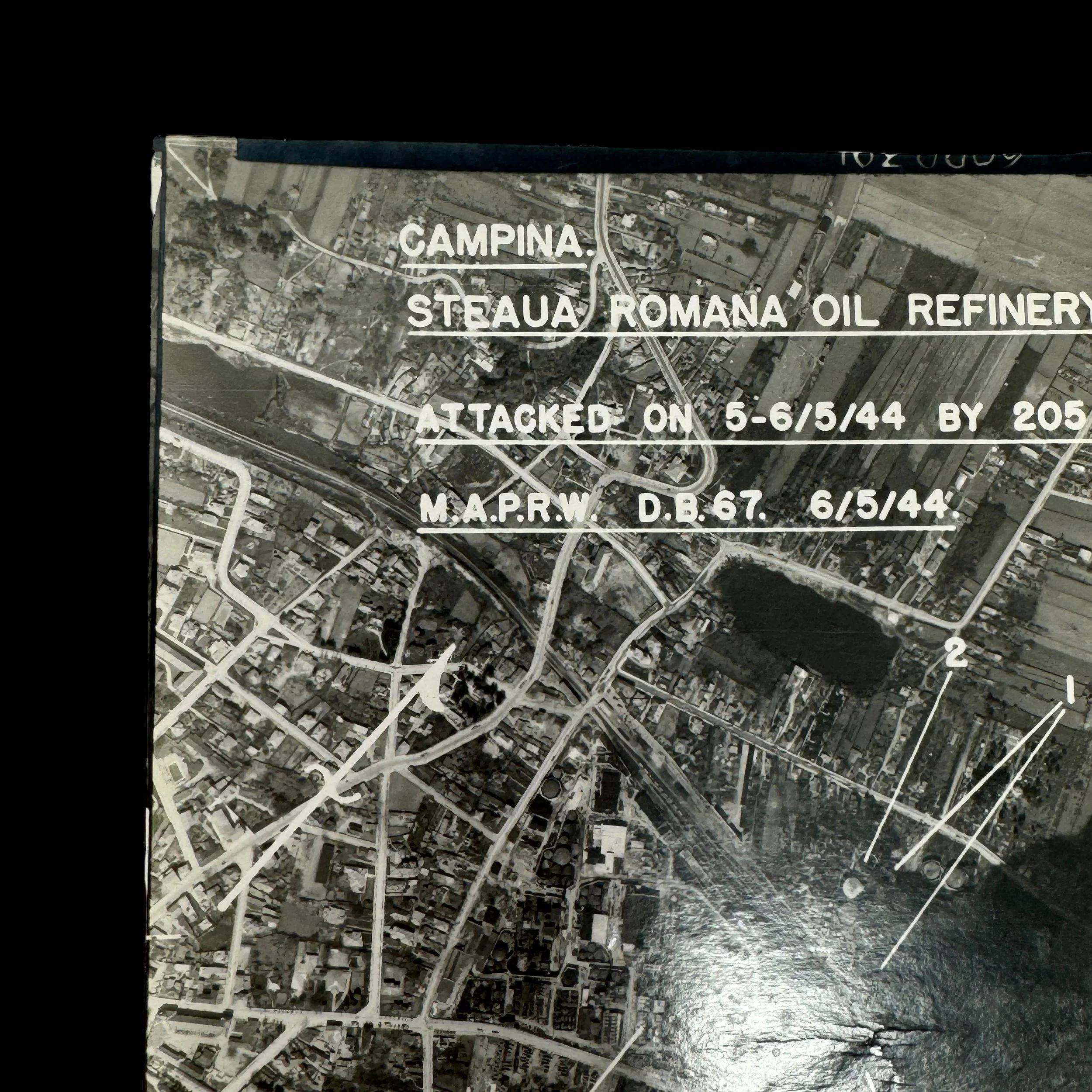
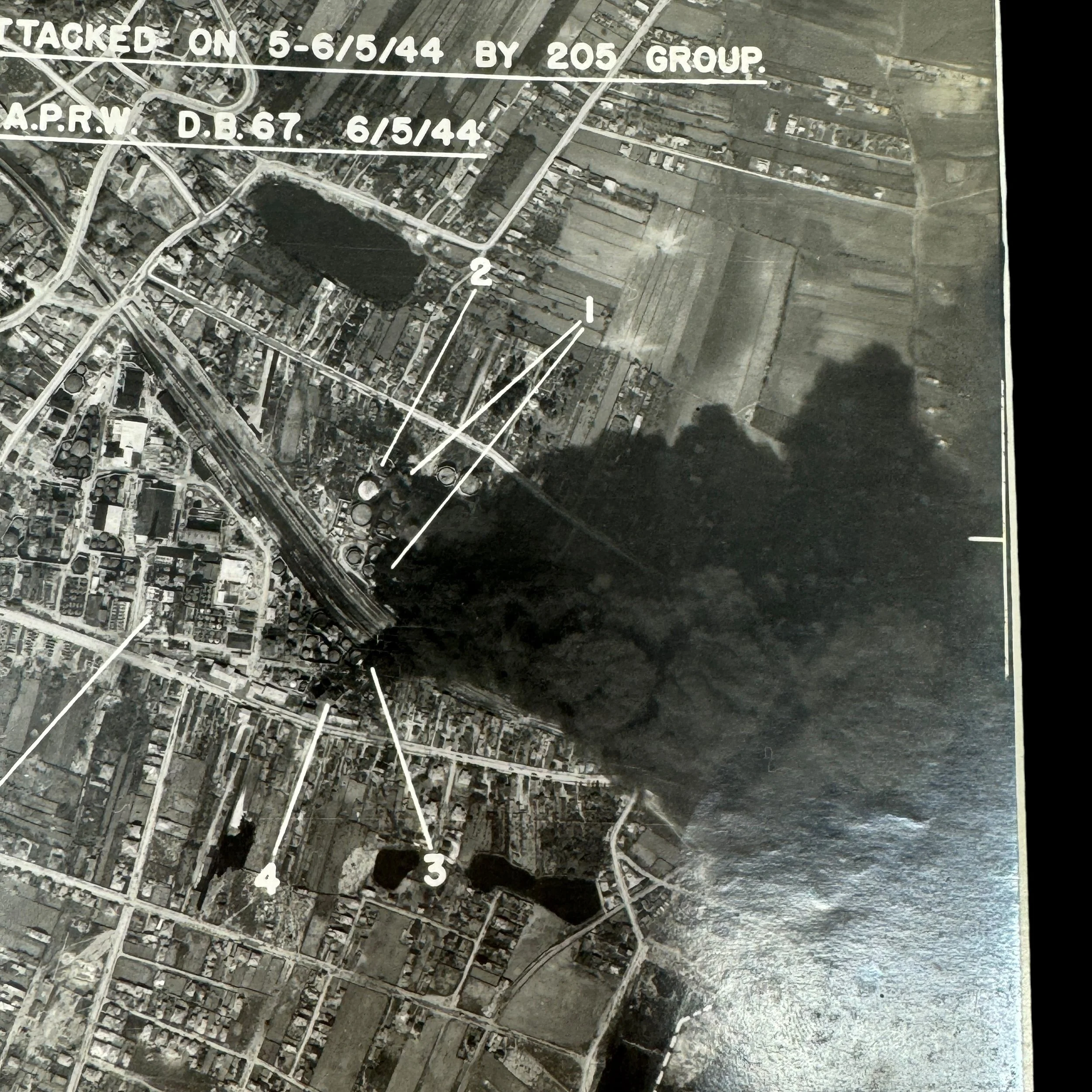
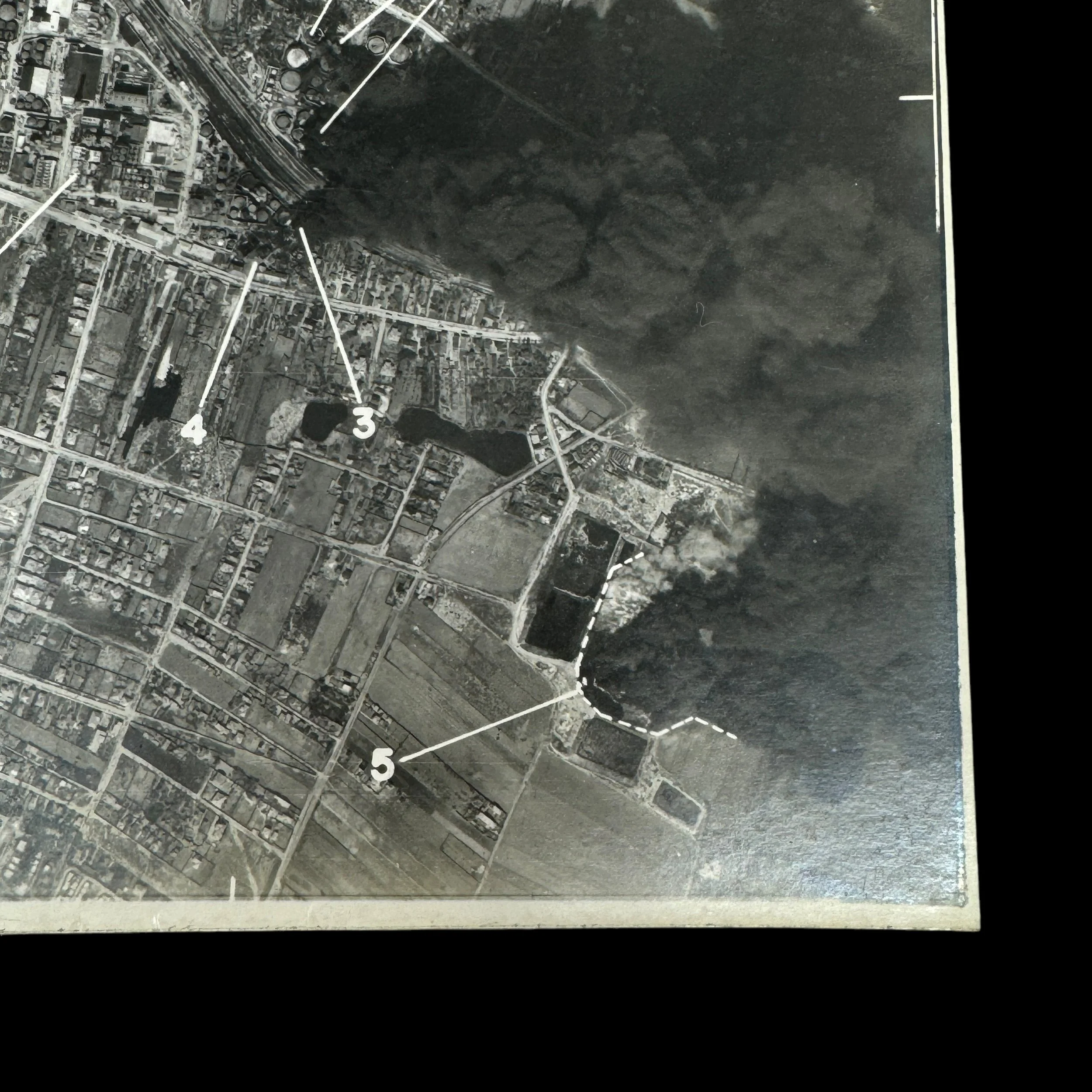
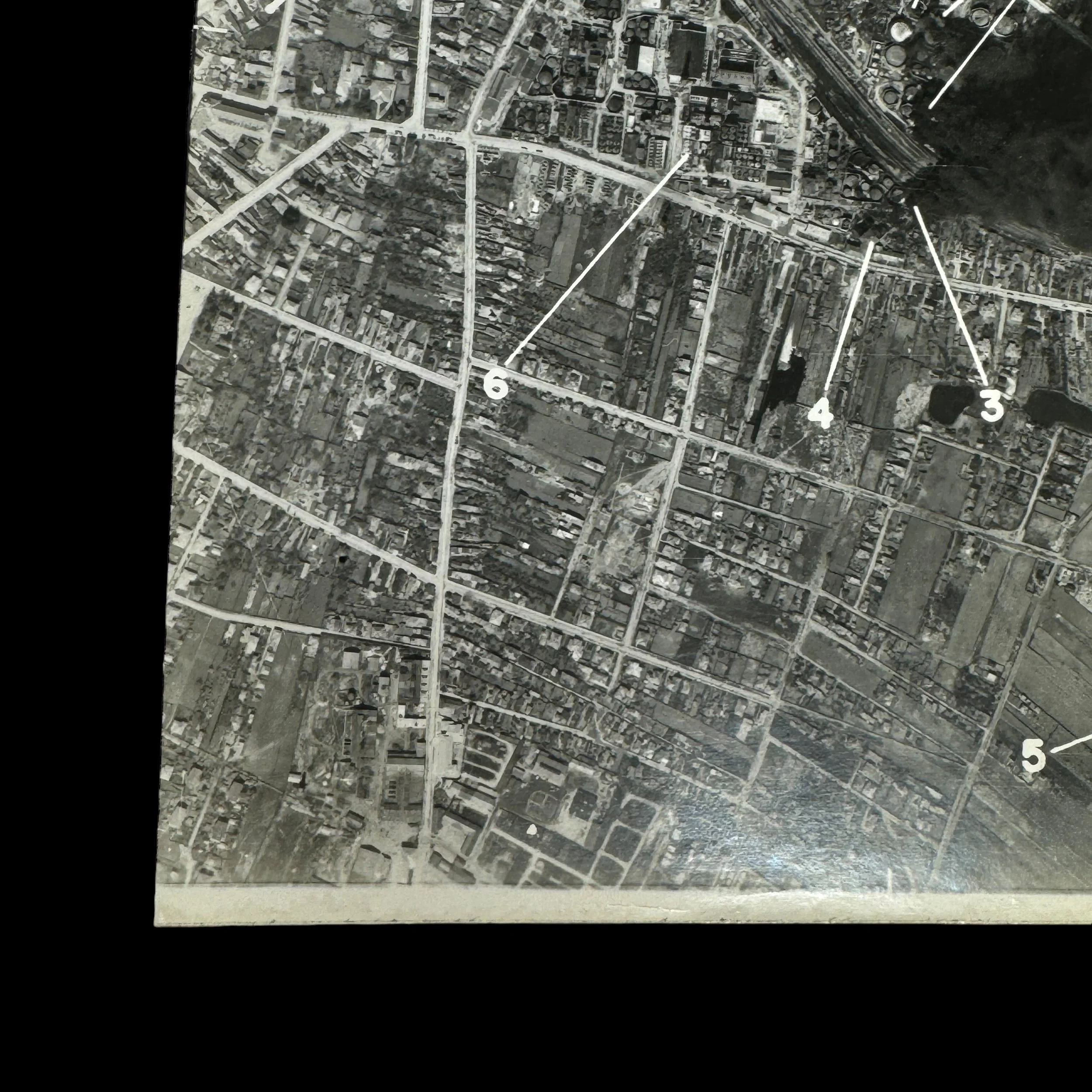
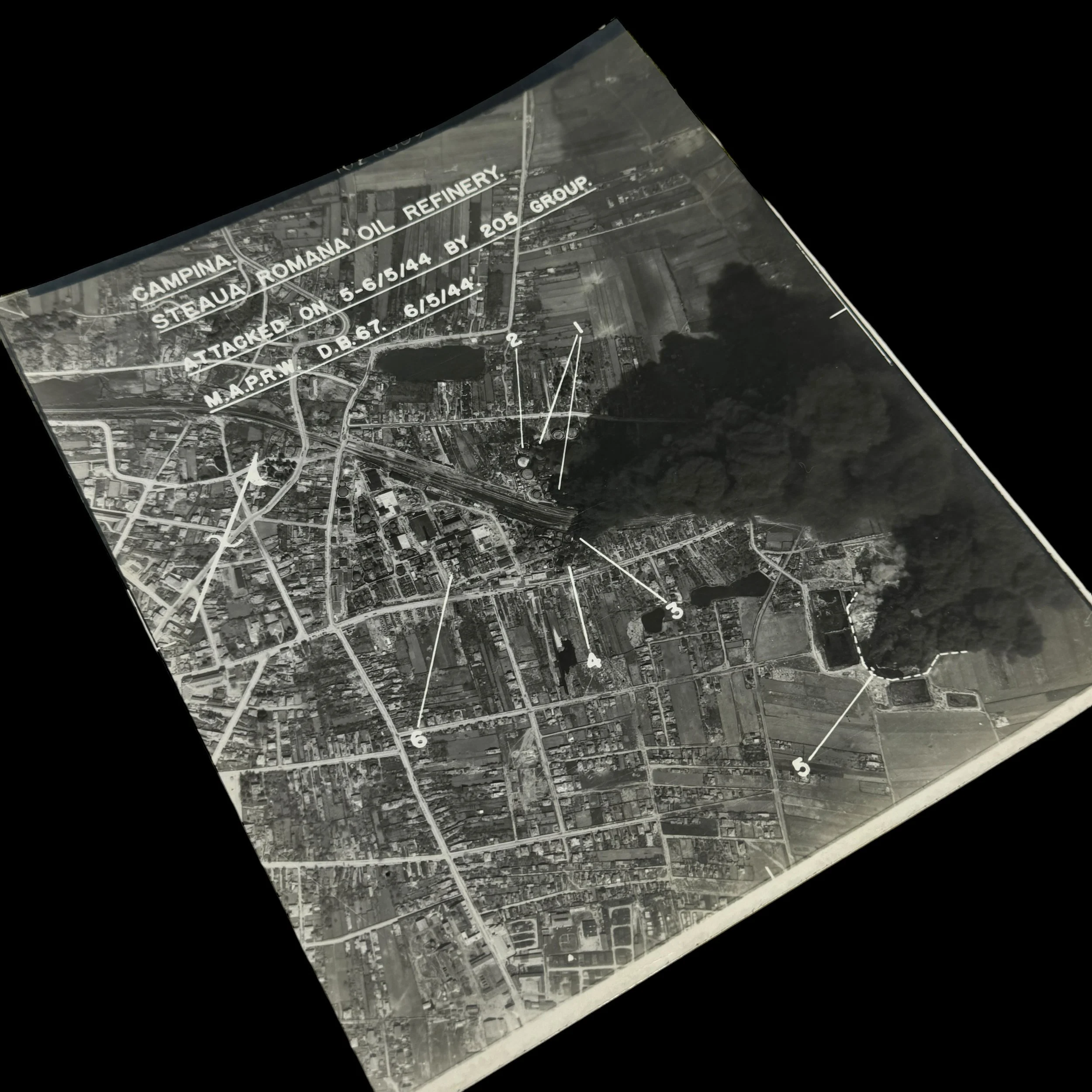
RARE! WWII 1944 Dated 205th Bomb Group (Heavy) 15th Air Force Combat Intelligence Photograph
Comes with a hand-signed C.O.A.
This rare and museum-grade WWII artifact is an original combat intelligence photograph taken and used by the 205th Bomb Group (Heavy) - 15th Air Force. This marked intelligence photograph shows the 205th Bomb Group B-17 & B-24 raid on Romanian Oil Fields in 1944.
The 205th Bomb Group (Heavy) was part of the larger Fifteenth Air Force, a strategic bombing force created during World War II to engage in long-range bombing campaigns over Europe. Activated during the latter stages of the war, the 205th Bomb Group played a crucial role in bombing critical Axis industrial and military targets. Their missions contributed to the crippling of Nazi Germany's war machine, disrupting supply lines, and diminishing Germany's ability to produce the weapons, fuel, and supplies necessary to sustain their war efforts.
The 205th Bomb Group was stationed primarily in Southern Italy, where many Allied airbases were located. From here, they launched bombing raids deep into enemy territory. Their heavy bombers, typically Boeing B-17 Flying Fortresses or Consolidated B-24 Liberators, could carry large payloads of bombs over long distances, making them suitable for strategic bombing campaigns. They were tasked with targeting infrastructure crucial to the Axis war effort, including railroads, factories, bridges, and oil refineries, which were vital for powering the Nazi war machine. One of their most notable missions was the attack on the Campina Steaua Romana Oil Refinery in Romania, a key strategic target in the Allies' efforts to cut off the flow of oil to the Axis forces.
Strategic Bombing and the Importance of the Romanian Oil Fields
Throughout the war, the Allied bombing campaigns followed a strategic bombing doctrine that targeted industrial and military infrastructure. Oil refineries were of particular importance, as modern warfare depended heavily on fuel to power tanks, aircraft, and ships. Romania’s oil fields were among the largest in Europe and provided a significant portion of the fuel that powered Nazi Germany’s military forces. The country was also one of Germany's closest allies in the European theater, offering a rich supply of oil from the Ploiești oil fields. The Campina Steaua Romana Refinery, located not far from Ploiești, was one of Romania's largest oil production and refining facilities, contributing a substantial amount of fuel to Germany’s military operations.
From as early as 1942, the Allies recognized the importance of the Romanian oil fields and refineries to the Axis war effort, and multiple bombing campaigns were launched to target these facilities. These raids were crucial, as oil was one of the most important commodities needed for sustaining prolonged military campaigns. By 1944, the Allies had already conducted several significant air raids on Ploiești and its associated refineries, but the continued flow of oil made it clear that further efforts were required to completely cripple Germany’s supply.
The 205th Bomb Group's Mission to Campina: The Raid on the Steaua Romana Refinery, 1944
On July 31, 1944, the 205th Bomb Group participated in a large-scale raid on the Steaua Romana Refinery in Campina. This mission was part of Operation Tidal Wave, a broader Allied campaign aimed at eliminating the fuel supply to Nazi forces by targeting Romanian oil production facilities. The mission was one of the most daring and dangerous operations undertaken by the Fifteenth Air Force due to the heavily fortified defenses around the refineries, including anti-aircraft artillery, German fighter planes, and smoke screens designed to obscure the targets.
The raid involved dozens of bombers from the 205th Bomb Group, along with other bomb groups from the Fifteenth Air Force. The B-24 Liberators and B-17 Flying Fortresses flew from their bases in Italy, crossing the Adriatic Sea and traversing hostile territory in the Balkans before reaching their target. The crews knew that they would face intense anti-aircraft fire and enemy fighters, but the importance of the mission was paramount.
As the bombers approached Campina, they were met with fierce resistance. German and Romanian anti-aircraft guns opened fire, filling the sky with deadly flak. Many of the bombers sustained damage, and several were shot down. Despite this, the crews pressed on, flying in tight formations to maximize their defensive firepower. The smoke screens that had been deployed around the refinery made precision bombing difficult, but the 205th Bomb Group and their fellow bombers managed to drop their payloads on the target.
The attack on the Steaua Romana Refinery was successful in damaging key parts of the facility, which severely hampered oil production. Although it was not completely destroyed, the refinery's capacity was significantly reduced, contributing to the overall decline in fuel supplies for the Axis forces. This raid, along with others on Romanian oil facilities, was a key factor in the eventual collapse of Germany’s ability to conduct large-scale military operations, particularly on the Eastern Front, where the shortage of fuel became a critical problem.
The Impact of the Raid and the Role of the 205th Bomb Group
The raid on the Steaua Romana Refinery was part of a larger campaign that saw the 205th Bomb Group participate in numerous missions across Europe. These raids targeted not only oil refineries but also other key infrastructure such as rail yards, airfields, and industrial centers. The precision and bravery displayed by the crews of the 205th Bomb Group were emblematic of the larger effort of the Allied air forces to cripple the Axis powers’ ability to wage war.
The success of these bombing raids did not come without a cost. The crews of the 205th Bomb Group endured significant losses during their missions. Bombing runs over heavily defended targets, like the Steaua Romana Refinery, were dangerous, with many bombers being shot down by flak or enemy fighters. Those who survived these missions often faced harrowing conditions, such as oxygen shortages at high altitudes, freezing temperatures, and the constant threat of attack from enemy aircraft. Despite these challenges, the airmen of the 205th Bomb Group remained committed to their mission, understanding the critical importance of their role in the broader war effort.
The 205th Bomb Group’s role in World War II, particularly in missions like the raid on the Campina Steaua Romana Oil Refinery, exemplifies the bravery, precision, and strategic importance of the Allied bombing campaigns. The destruction of oil refineries and other critical infrastructure played a decisive role in weakening the Axis powers, particularly Nazi Germany, by denying them the resources needed to sustain their military operations. The sacrifices made by the men of the 205th Bomb Group and their fellow airmen were instrumental in achieving victory in Europe, and their legacy continues to be remembered as a key part of the air war during World War II.
The attack on the Steaua Romana Refinery in 1944 stands out as a testament to the strategic importance of air power in modern warfare and the vital role played by the 205th Bomb Group in the larger Allied victory.